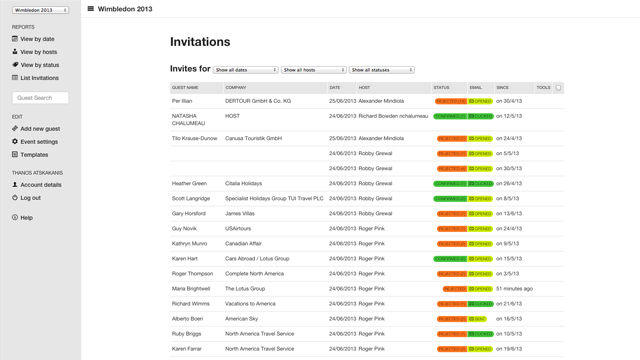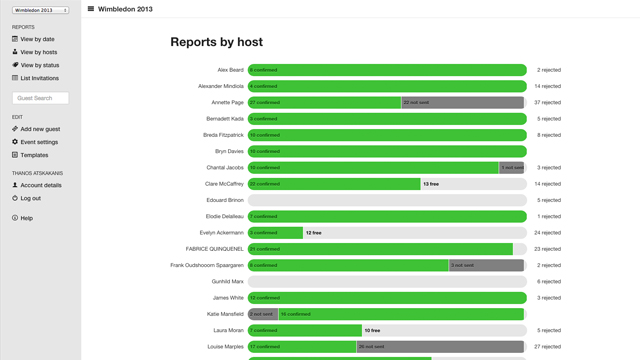How user stories help measure success
How user stories helped the design and development of the event management system we built for Hertz, the global car rental and van hire company.
We’ve recently been reflecting on one of Pretty’s big projects of 2013 - the iteration of the event management system we built for Hertz, the global car rental and van hire company. Having already built a solid system in 2009, we needed to make it even more robust, intuitive and flexible for the staff who were going to use it. Which is why when we started the process we began by mapping out user stories, as a way to tap into the mindset of the employees and ensure what we built solved every need and problem required for the client.

Screenshot: Example of Hertz event system user interface design
What are user stories?
User stories are a simple tool which help to explain what the users need to be able to do when they use a product, and what functions need to be available to them. User stories are just one part of the larger user experience (UX) process which takes into account user cases, user profiles, user journeys, information architecture, wireframes, prototypes and requirements. User stories might only be a small part of UX, but they’re key to a project’s success.
How do you write a good user story?
Before you start writing the stories, it’s critical that you establish the different types of user through some or all of the following methods:
- statistics and analytics
- client intelligence/knowledge
- talk to/observing users
Once the users have been determined, it’s time to work collaboratively with the client and users to discover the functions a product needs to have, and why. This is where the writing begins, however user stories needn’t be very long - usually a sentence or two will suffice and each story should be for one need or function at a time.
These are the building blocks for our user stories at Pretty:
As a <user’s role> I want <goal/desired outcome> [so that <benefit>]
To put this in context, here are a couple of the user stories we wrote for Hertz:
As an <event admin>, I want to add or edit an event
As a <host>, I want to assign guests to a date and send them an email invitation
As a <system admin> I want to see if any emails have returned undelivered
Why did we need user stories for Hertz?
By collaborating closely with Hertz we were not only able to define the 3 key user types and their needs but also gain focus for the project. Having a set of user stories clearly defined from the off ensured that everyone involved was 100% on board with what the product needed to do, in turn making sure that what we created for Hertz solved the right problem whilst giving us a benchmark for success.
It also brought people together on the project, no matter their technical know-how. This is because the stories are so easy to grasp. This was perfect for the Hertz project because the client and their users understood what we were trying to achieve in a simple way - without complicating things with technical functional specification documents.

Screenshot: Design of reporting for the events management system
How did the user stories help us measure success?
By writing 24 clear and simple user stories for Hertz, the team here at Pretty were able to put themselves into the client’s mindset and build upon the original product, making it even more useful and intuitive for the 40 members of staff who would use it to manage invitations to the Wimbledon Championships 2013.
The user stories also helped us stay on track, as we often revisited the stories as reminders of the whys and hows of the project. And once the development was complete and we were analysing the success of the project as a whole, we were able to determine that the needs had been met by checking off each user story.
The product we built was not only great for managing Hertz events at Wimbledon this year, but will prove to be useful for next year’s tennis championships and even more events throughout the coming years.
For more about our work with Hertz, see the case study.
